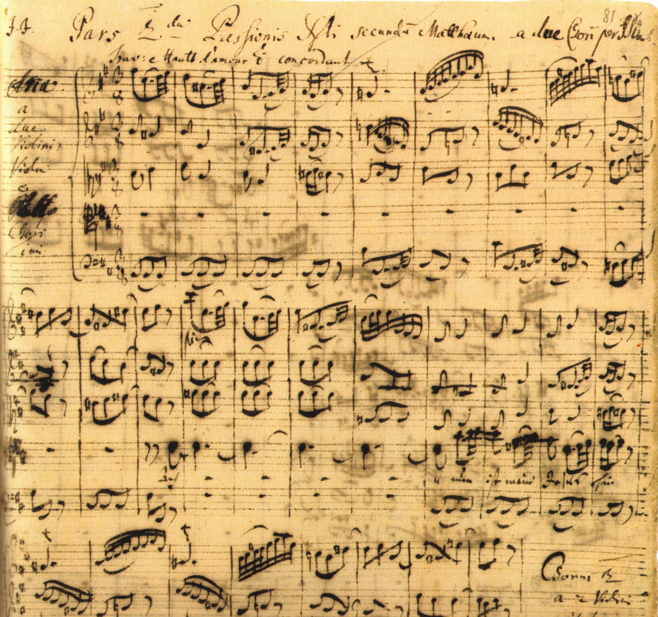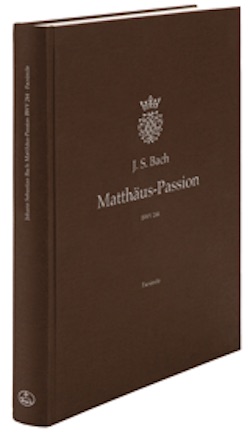|
|
Johann Sebastian Bach Matthäus-Passion BWV 244 Autograph Staatsbibliothek zu Berlin, Preußischer Kulturbesitz Commentary by / Kommentar von Christoph Wolff, Martina Rebmann Preface by / Geleitwort von Barbara Schneider-Kemf [Staatsbibliothek, Berlin, mus. ms. aut. Bach P. 25] 
|
|
|
|
 |
|
According to Christoph Wolff the double choir called for in the St. Matthew Passion is not introduced for its own sake, but reflects the principle of the libretto with two allegorical partners—"the daughters of Zion" and "the Faithful"—contraposed in dialogue with one another. There are three fundamentally different textual layers of the St. Matthew Passion, madrigalian poetry, biblical text, and hymns, none of which stand in abrupt juxtapostion. A note on the physical condition of the manuscript The manuscript, more than any other autograph of Bach, has undergone significant physical damage. Even while still in the possession of the composer, perhaps in the later 1740s, some mishap (fire?) occurred to the first 13 leaves forcing Bach to cut off the outer margins, glue on replacement strips, and recopy the missing musical material. Then in the early 20th century library staff observed serious ink corrosion eating through the paper. The first restoration attempts included overlaying a thin piece of silk chiffon attached with rice starch to bond the paper. In the 1990s separating leaves were inserted between leaves to prevent bleed through. Subsequent investigation determined that the silk chiffon application actually hastened the ink erosion. Conservators now used a different procedure, actually "splitting" the original leaves into front and back sides and then inserting a paper with an alkaline buffer. In this process weak spots in the leaves were reinforced with fine cellulose fibers and adhesive gelatine used to reunite front and back sides of the leaves encapsulating the damaging ink. The exterior silk chiffon, was removed. How much the manuscript has suffered in the last 90 years can be seen by the Biblical texts, originally in red ink—and captured in the Insel facsimile—now faded, in part due to the removal of the silk chiffon. (adapted from the commentaries of Christoph Wolff and Martina Rebmann)
|
|